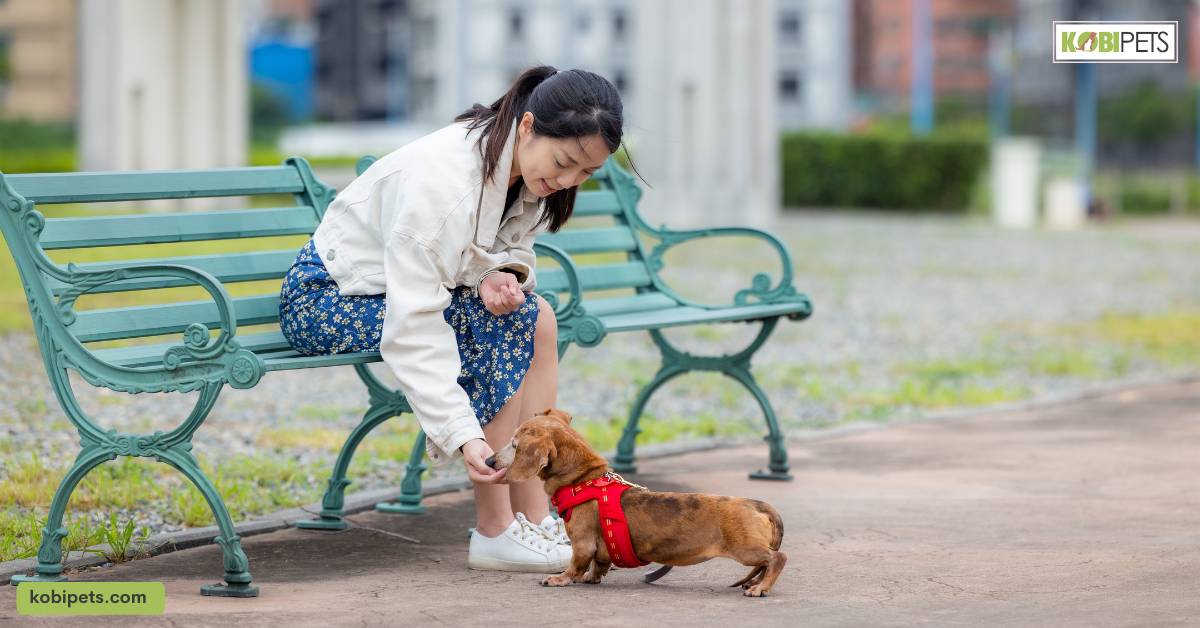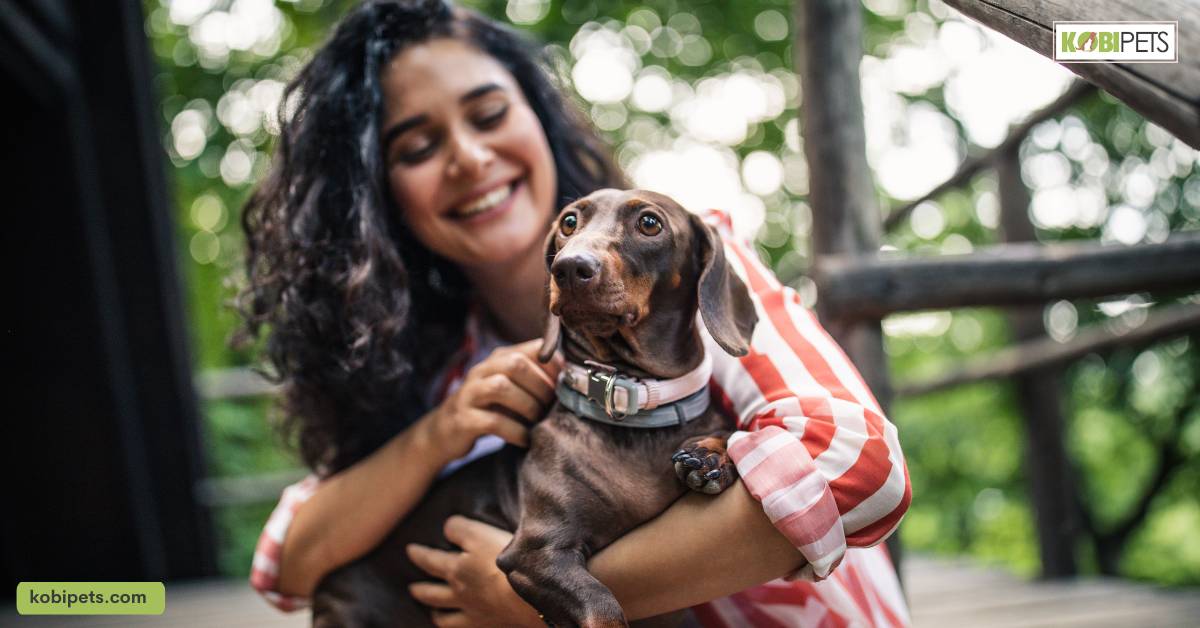Training your adorable Dachshund can be an exciting adventure for both of you. These little pups are known for their intelligence and stubborn streak, traits that can make training both an intriguing challenge and a fun experience. This article is here to guide you through the process.
With a pug’s intelligence and stubbornness, these pups make training a challenge. Be sure to start early, be consistent and use positive reinforcement, keep sessions short, use simple commands, be patient, socialize your pup, redirect unwanted behaviors, set realistic expectations, and avoid punishment.
1. Start Your Dachshund Puppy Early
The ideal time to start training your Dachshund puppy is as soon as you bring them home. Young puppies are like sponges, ready to absorb all the lessons you teach them.
The sooner you start, the easier it will be for them to pick up good habits and avoid developing undesired behaviors. Remember, it’s not just about obedience training at this stage; it’s also about house training, leash training, and socialization.
2. Consistency is Key
When it comes to training, consistency should be your number one priority. Training your Dachshund means establishing a routine and sticking to it. It’s important for both of you to have clear expectations on what behaviors are encouraged or discouraged.
This helps the pup understand what is expected of them and how they can best please their master. Consistency also reinforces positive behavior, making it easier for your pup to learn and remember.
Additionally, be sure to use the same commands when teaching them new skills as this will help prevent confusion and ensure that they understand what is expected of them.
3. Positive Reinforcement with Your Dachshund
Positive reinforcement is an essential tool for training your Dachshund. This involves rewarding your pup immediately after they perform a desired behavior, encouraging them to repeat it.
The reward can be in the form of treats, praise, or extra playtime. Remember, Dachshunds are highly food-motivated, making treats an especially effective reinforcement.
This method not only accelerates learning but also fosters a positive relationship between you and your pet, making training sessions more enjoyable.
4. Keep Training Sessions with Your Dachshund Short and Sweet
Dachshunds have a relatively short attention span, so it’s best to keep training sessions short, ideally 10-15 minutes at a time. Break instruction into manageable chunks and ensure your puppy feels successful at each step.
Multiple short, positive sessions throughout the day are far more effective and less frustrating for both of you than one long, drawn-out training period. Remember to always end on a high note to maintain enthusiasm for future sessions.
5. Use Simple Commands with Your Dachshund
Dachshunds respond best to simple, direct commands. Phrases like “stay,” “sit,” “come,” and “no” are easy for them to understand. Avoid using multiple words for the same command as it could confuse your pup.
Be sure to say the commands clearly and distinctly, using a firm but encouraging tone. This will help your Dachshund understand what you’re asking and reinforce their learning.
6. Be Patient with Your Dachshund
Patience is crucial when training your Dachshund. These pups are intelligent but can be stubborn, which could sometimes slow down the training process. Do not get frustrated or rush them.
Remember, learning takes time and each dog moves at their own pace. Celebrate small victories and progress, and remind yourself that consistent, patient training will yield long-term success.
In this journey, your patience will be rewarded with a well-behaved and obedient Dachshund companion.
7. Socialize Your Dachshund Puppy
Socializing your Dachshund puppy is an essential part of their training. Introduce them to a variety of people, places, and experiences to help them feel comfortable in different situations.
Early socialization can significantly reduce behavioral issues in the future, making your Dachshund more adaptable and confident. Remember to ensure these experiences are positive, as negative experiences can lead to fear or anxiety.
Use treats and praise to make socialization sessions enjoyable and rewarding for your pup.
8. Redirect Unwanted Behaviors
Rather than scolding your Dachshund for unwanted behaviors, adopt a strategy of redirection. This involves distracting your pup with a toy or activity when they start engaging in negative behavior and guiding them towards a positive action.
For example, if they begin chewing on a shoe, redirect them to a chew toy. This method helps your Dachshund understand what is acceptable behavior without causing fear or stress.
9. Set Realistic Expectations
Setting realistic expectations is critical in the training process. Understand that Dachshunds, while intelligent, have their pace of learning. They won’t become perfectly trained overnight.
Celebrate small achievements and steadily build on them. Be patient and remember that the goal is to create a happy, healthy relationship with your pet. It’s not about achieving perfection, but about fostering mutual respect, understanding, and a bond that will last a lifetime.
10. Avoid Punishment-Based Training
Avoiding punishment-based training is crucial when training your Dachshund. Negative reinforcement can lead to fear, anxiety, and even aggression, deteriorating your relationship with your pet.
Instead, focus on positive reinforcement techniques. Remember, mistakes are part of the learning process. If your Dachshund makes a mistake, correct them calmly and gently, and guide them toward the desired behavior.
This creates a positive learning environment and strengthens the bond between you and your pet.
11. Teach “Leave It” and “Drop It” Commands
Teaching your Dachshund the “Leave It” and “Drop It” commands is essential for their safety and manners. These commands can prevent them from picking up or ingesting harmful objects, and also allow you to retrieve items from them without causing a tug-of-war.
Practice these commands regularly using treats and toys. Always reward compliance to reinforce the behavior, and your Dachshund will soon understand that obeying these commands leads to positive results.
12. Try Using an Online Dog Training Course
If you want to take your Dachshund training to the next level, consider enrolling in an online dog training course. These courses offer comprehensive instruction on a variety of topics such as basic obedience, agility training, and problem-solving techniques.
Additionally, many online courses provide personalized coaching sessions with experienced trainers who can help answer any questions or concerns you may have.
With an online dog training course, you can learn all the tools and techniques you need to ensure your pup’s success.
13. Always End Training Sessions on a Positive Note
Ending each training session on a positive note will reinforce the lessons learned and leave your Dachshund with a positive association towards training. This could be as simple as giving them a treat, praise, or playing their favorite game.
This strategy will keep them excited for future training sessions, making them more productive and enjoyable for both of you. Remember, a happy Dachshund is more likely to be a responsive and well-behaved pup.
In conclusion
Training a Dachshund can be a delightful and rewarding experience filled with moments of bonding, learning, and mutual respect. While their intelligence and stubbornness can present a unique challenge, the right approach can transform this into an advantage.
By implementing these 13 tips, from starting early and being consistent to using positive reinforcement and keeping sessions short, you can ensure a pleasant training journey for both you and your pup.


















